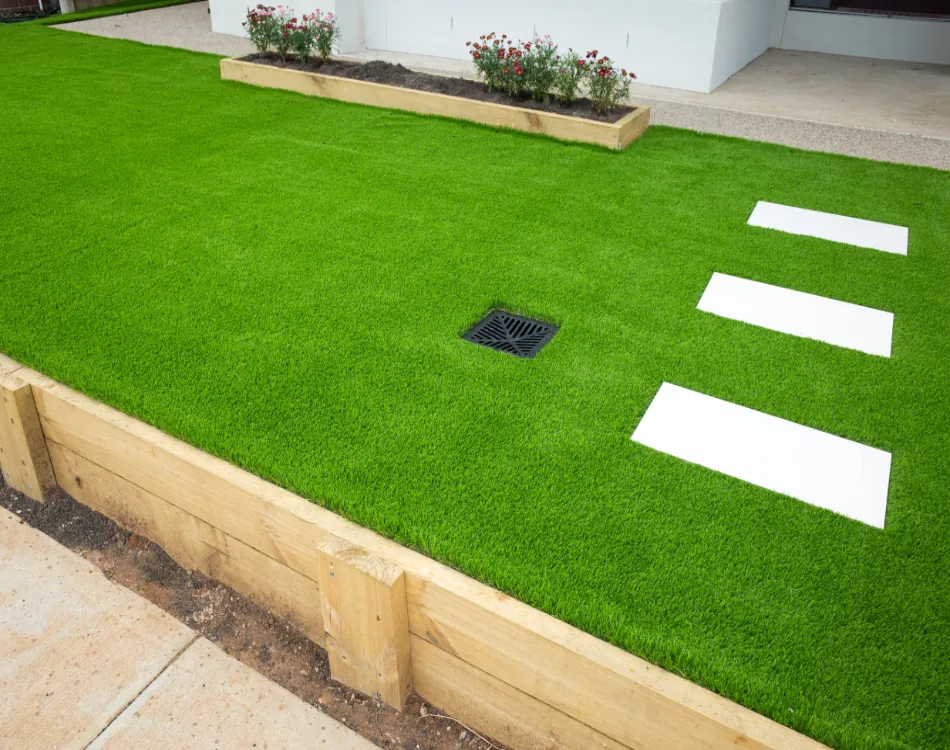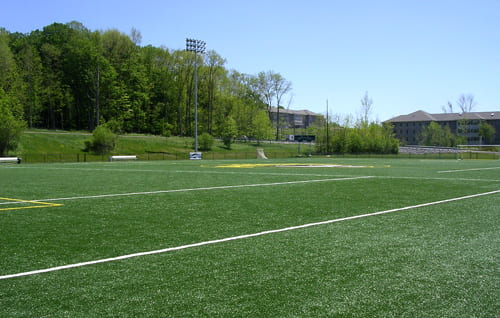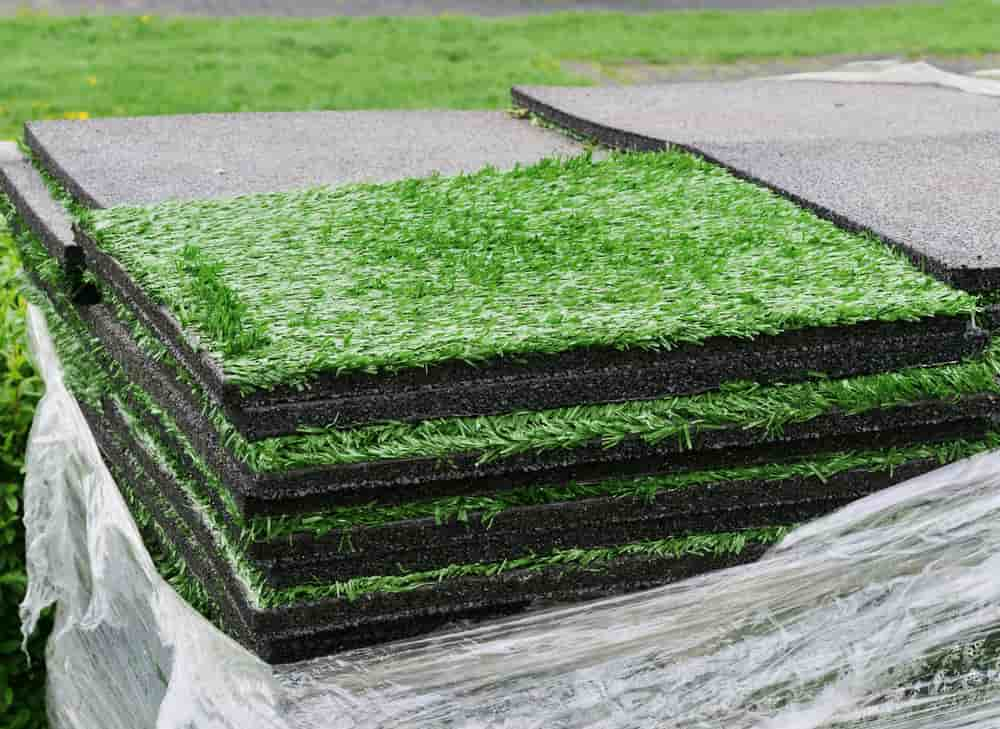Look Into the Environmental Conveniences of Opting for Artificial Turf Solutions
The adoption of fabricated grass remedies offers a compelling chance to deal with pressing environmental challenges. By considerably minimizing water use and minimizing the application of damaging chemicals, these choices not just advertise sustainable landscaping yet also secure neighborhood environments.
Water Preservation Benefits
Among the most significant advantages of synthetic grass is its capacity to preserve water. Typical grass lawns need considerable irrigation, particularly in locations prone to drought or water constraints. On the other hand, synthetic grass does not require watering, substantially decreasing the total demand for water sources. This attribute is particularly helpful in deserts where water shortage is a pushing worry.
By getting rid of the requirement for normal watering, synthetic grass adds to sustainable landscape methods and aids reduce the ecological influence of extreme water consumption. The preservation of water expands to the decrease of runoff, which can lead to dirt erosion and river pollution.
Furthermore, the installation of man-made turf enables districts and home owners to allocate water sources much more successfully, focusing on crucial usages such as alcohol consumption water and agriculture. The change in the direction of synthetic grass not just advertises accountable water usage but additionally aligns with more comprehensive environmental objectives focused on protecting all-natural sources.
As areas significantly focus on sustainability, the water preservation benefits of synthetic grass present a compelling situation for its adoption in industrial and household landscaping jobs.
Minimized Chemical Use
The change to synthetic grass considerably reduces the reliance on chemical treatments frequently used in all-natural yard maintenance. Conventional lawn management usually involves the application of fertilizers, pesticides, and herbicides to advertise development and control bugs. These chemicals can posture risks to human health and wellness, regional wildlife, and the setting, adding to dirt and water contamination.
In contrast, synthetic grass eliminates the demand for these damaging compounds. By minimizing the launch of artificial compounds into the ecological community, man-made grass promotes healthier soil and water systems.
Furthermore, the lack of chemical drainage linked with synthetic grass setups aids protect regional rivers from air pollution, supporting water life and keeping biodiversity. Arizona turf. As communities increasingly prioritize sustainable methods, choosing synthetic grass presents a practical option that aligns with ecological conservation objectives. Via this shift, residential or commercial property owners can take pleasure in rich eco-friendly areas without compromising environmental health, leading the way for an extra sustainable future
Reduced Carbon Impact

Moreover, the installation of synthetic lawn can result in significant water conservation. Natural yards require significant amounts of water for watering, which not only Web Site includes in the carbon footprint related to water removal and treatment however additionally stress regional water resources. In contrast, synthetic grass needs marginal upkeep, calling for no watering, consequently substantially minimizing water use and its connected energy prices.
In addition, the longevity of fabricated turf adds to its lower carbon influence. With a life expectancy of approximately 15 years or even more, the requirement for frequent replacements is lessened, resulting in less waste and reduced energy consumption in production and taking care of typical yard choices. Overall, artificial grass provides a sustainable alternative for eco mindful landscaping.
Habitat Preservation
Habitat conservation is a vital factor to consider in the dispute over landscaping options, particularly when comparing fabricated lawn to all-natural yard. All-natural grass lawns frequently call for comprehensive upkeep, including using chemicals, herbicides, and plant foods, which can negatively impact local communities. These chemicals can seep into the soil and rivers, harming indigenous plants and fauna and disrupting regional habitats.
Synthetic grass gets rid of the need for hazardous chemicals, therefore securing neighboring wild animals and preserving the stability of bordering ecological communities. The installment of artificial turf can lead to the conversion of previous yard locations right into even more biodiverse landscapes, such as pollinator yards or indigenous plant areas, which can sustain local wildlife.
Ultimately, the shift to artificial grass not only preserves water and minimizes maintenance initiatives however also fosters an extra harmonious relationship between human tasks and the natural surroundings, promoting environment conservation while doing so.
Long-Term Sustainability
Lasting sustainability is an essential consider assessing the advantages of fabricated turf over traditional turf lawns. One of one of the most substantial advantages of artificial turf is its resilience; it can last up to 15-20 years with marginal upkeep, whereas all-natural grass requires constant reseeding and substitute. This long life other minimizes the need for continuous sources, such as water, fertilizers, and chemicals, which are essential for keeping a healthy and balanced yard yard.
Furthermore, fabricated grass adds to a decrease in carbon exhausts linked with lawn care equipment. Conventional lawns often require gas-powered lawn mowers, leaners, and blowers, all of which add to air pollution. Turf installation phoenix az. On the other hand, synthetic turf eliminates the demand for such devices, advertising a cleaner setting
Moreover, the production of fabricated lawn significantly uses recycled materials, improving its sustainability account. As manufacturers take on green techniques, the environmental impact of fabricated turf remains to lessen.

Conclusion
The fostering of synthetic lawn services provides significant ecological benefits, consisting of considerable water conservation, reduced reliance on hazardous chemicals, and a lower carbon footprint. Artificial grass aids in preserving natural habitats by reducing land disturbance and promoting lasting sustainability through the use of long lasting products. Collectively, these factors underscore the possibility of artificial turf to add favorably to environmental wellness and supply a practical alternative to standard landscaping why not find out more methods in a significantly resource-conscious globe.
In contrast, fabricated turf does not need watering, dramatically lowering the general demand for water sources. By reducing the release of artificial compounds into the ecosystem, man-made lawn promotes healthier soil and water systems.
In addition, the setup of synthetic grass can result in significant water preservation. In comparison, artificial lawn needs very little maintenance, requiring no watering, consequently dramatically reducing water usage and its associated power expenses.
